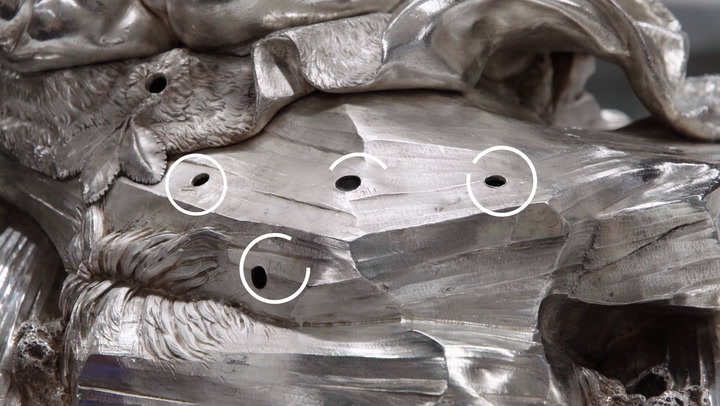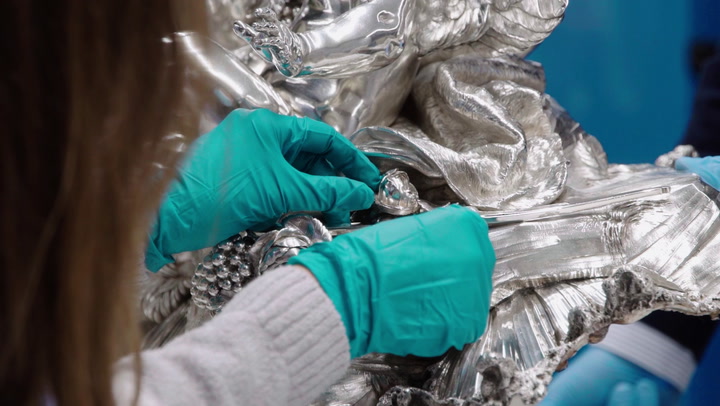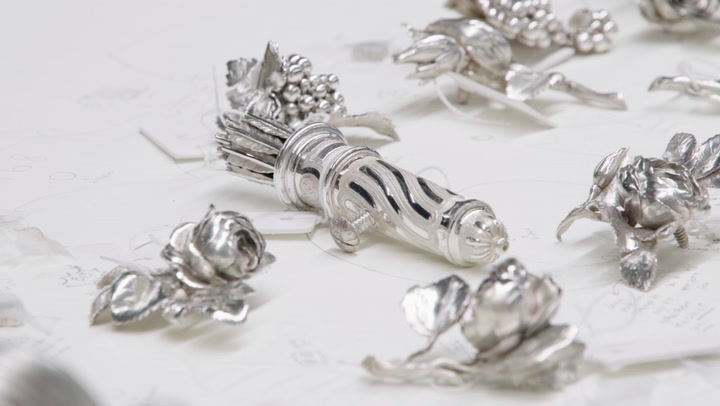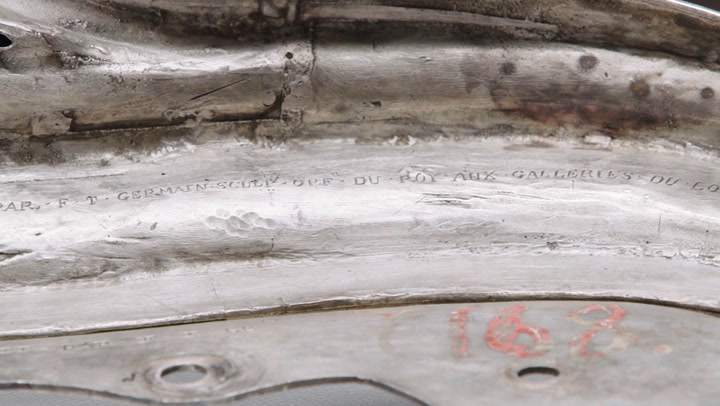The conservation (and assembly) of the Centrepiece by François-Thomas Germain.
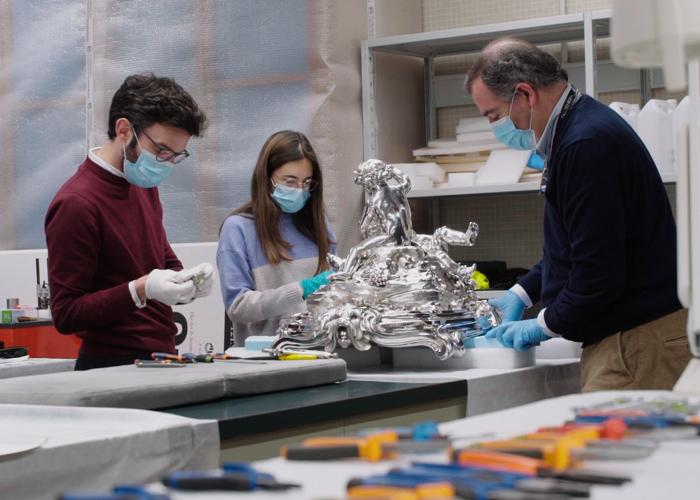
Conservation is one of the fundamental tasks of any museum. It seeks to identify and monitor the various agents of deterioration that can cause an artwork to lose value. The main goal of conservation is to prolong as far as possible the life of the object, halting any potential processes of degradation by stabilising the constituent materials of the pieces.
In the particular case of the Calouste Gulbenkian Museum and its collection of silver and gold objects, and in pursuit of the efforts made since the founding of the Museum, a conservation project has been in place since 2019, focusing particularly on the cleaning of the objects.
One of the works in the collection that required a more complex intervention was the large Centrepiece made by maître-orfèvre François-Thomas Germain (1726-1791).
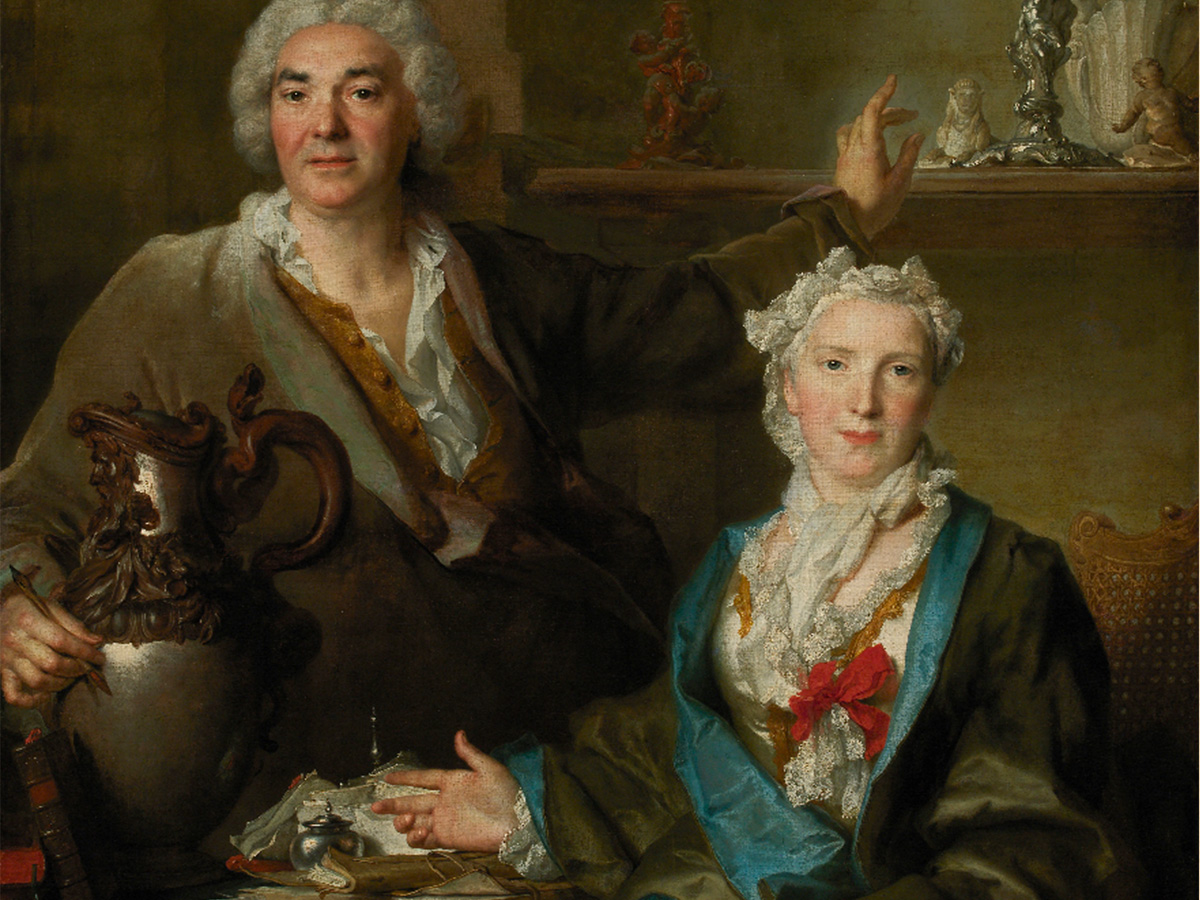
Centrepieces (surtouts de table) were one of the most important elements of 18th-century luxury tableware, almost always linked to a functional use, frequently including candle holders or other parts of the dinner service (salt and spice cellars).
The Centrepiece in the Gulbenkian collection, composed of a central piece (for the middle of the table) and two lateral sections (for the head and foot of the table), is almost entirely lacking in utilitarian function, its focus being the intense sculptural and visual aspect.
Indeed, it represents a true tour de force of the artistic and technical skills of one of the most renowned Parisian orfèvres of the day – skills and prestige that did not go unnoticed by some of the main courts and aristocracy in Europe, who approached him with successive commissions that were only brought to a halt by the silversmith’s notorious declaration of bankruptcy in 1765.
The work in question was commissioned by Count Piotr Grigorievitch Chernichev, the Russian ambassador in Paris, and we know that it was already at production stage in 1763 (although it was only completed in 1766, after the silversmith’s bankruptcy). An inscription on the reverse of the base of the central piece shows us the date of completion, as well as the name and status of the master who made it: ‘FAIT . PAR . F. T. GERMAIN . SCULPr . ORFre . DU . ROY . AUX . GALLERIES . DU . LOUVRE A PARIS 1766’ (Made by François-Thomas Germain, sculptor-silversmith of the King in the Galleries of the Louvre in Paris 1766).
When, in 1929 and 1930, Calouste Gulbenkian managed to purchase a significant group of artworks from the collections of the Hermitage Museum, in Saint Petersburg, from the Soviet Government, this surtout was part of the lot bought in 1930. An old inventory number marked in a (red) seal on the reverse of the piece (‘7168’) refers specifically to this work’s journey through the Imperial Russian collections and the celebrated Hermitage Museum.
In terms of the cleaning of this complex piece, and focusing in particular on the central section, it was clear from the outset that the various constituent elements would have to be dismantled. This was the only way to appropriately and fully clean each piece, as well as the areas where the various sections or components join together. Interestingly, we noticed that some of the standalone pieces were entirely and delicately decorated (with chiselling and engraving), even though they were partially covered by other compositional or decorative elements.
The quiver with arrows is an eloquent example of this. Even the apparently hidden aspects warranted the attention of the master and his assistants!
The dismantling of the Centrepiece allowed us to separate it into 28 autonomous parts, including larger, more structural pieces, as well as smaller decorative elements.
Most of these small autonomous components show, on the reverse, incised Roman numerals that correspond to the point at which they fix together during assembly (matched with another piece showing the same code), a frequent method in similar compositions, but also in objects of lesser magnitude and complexity (as we can see in other works in the Gulbenkian collection).
Beyond the clear benefits of preserving art collections, it is no less fascinating to witness the gains in knowledge stemming from these conservation projects, both in terms of knowledge of the artworks themselves and the artistic techniques used to produce them. Indeed, conservation and knowledge are inseparably linked on the path that leads to the development and fulfilment of the mission of any museum.
André das Neves Afonso
Curator of the Calouste Gulbenkian Museum
Mafalda Fernandes
Conservator-restorer
Calouste Gulbenkian Museum
Rui Xavier
Curator and Head of Preventive Conservation of the Calouste Gulbenkian Museum
